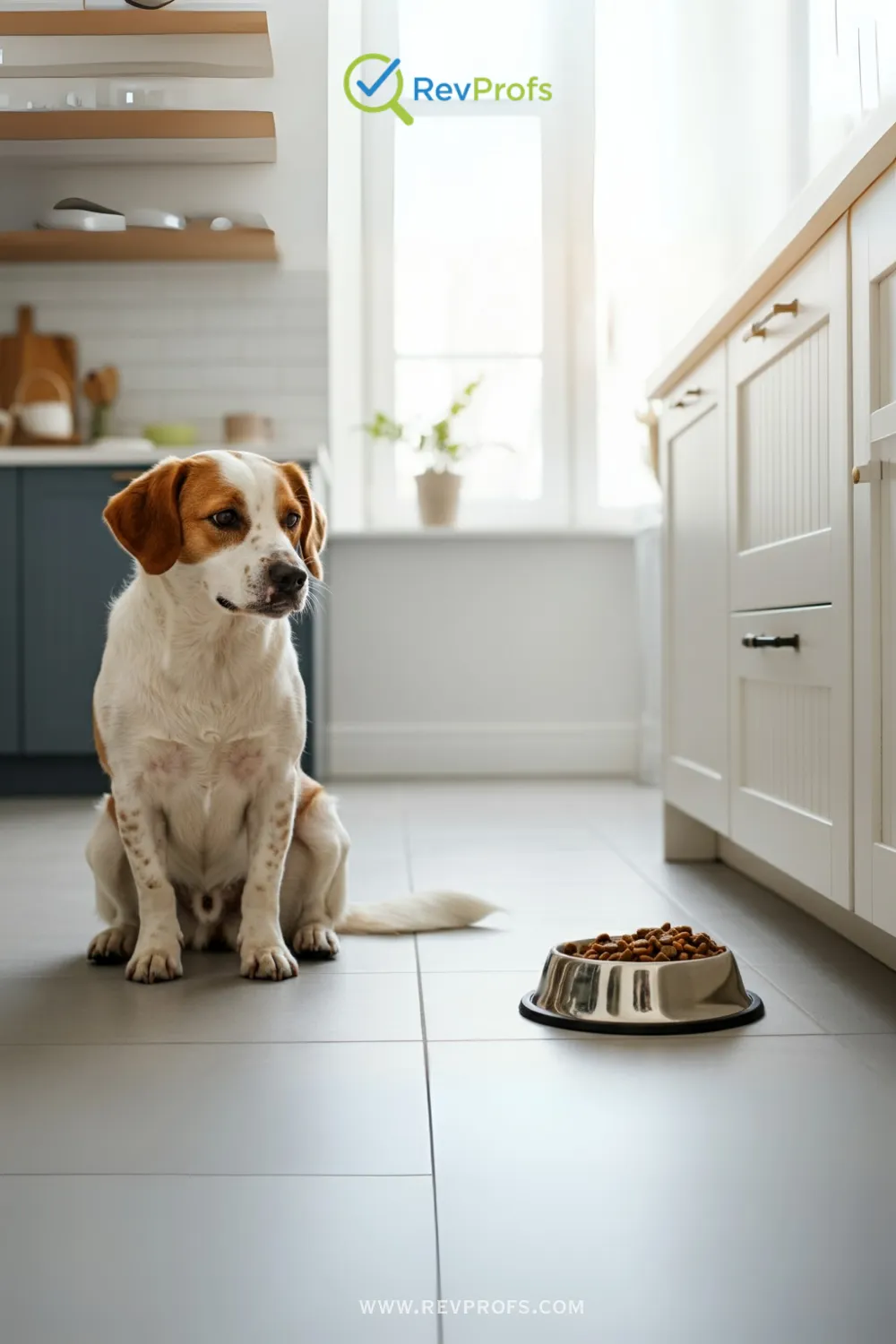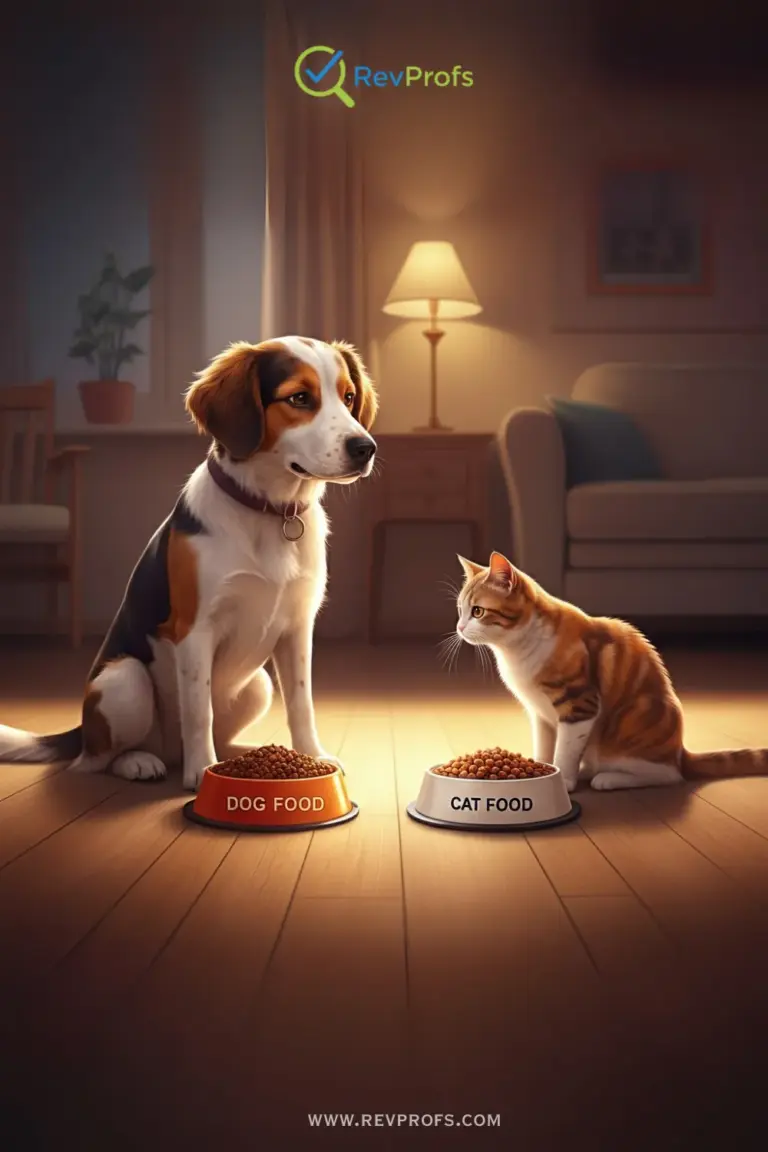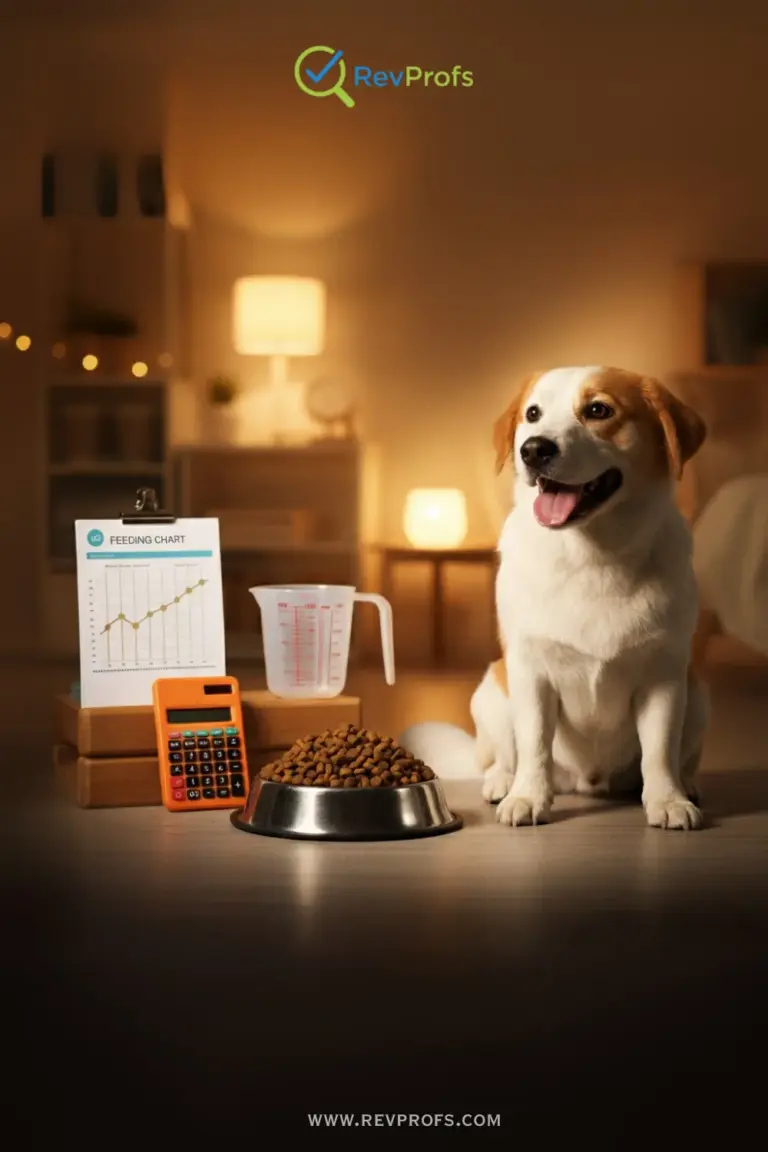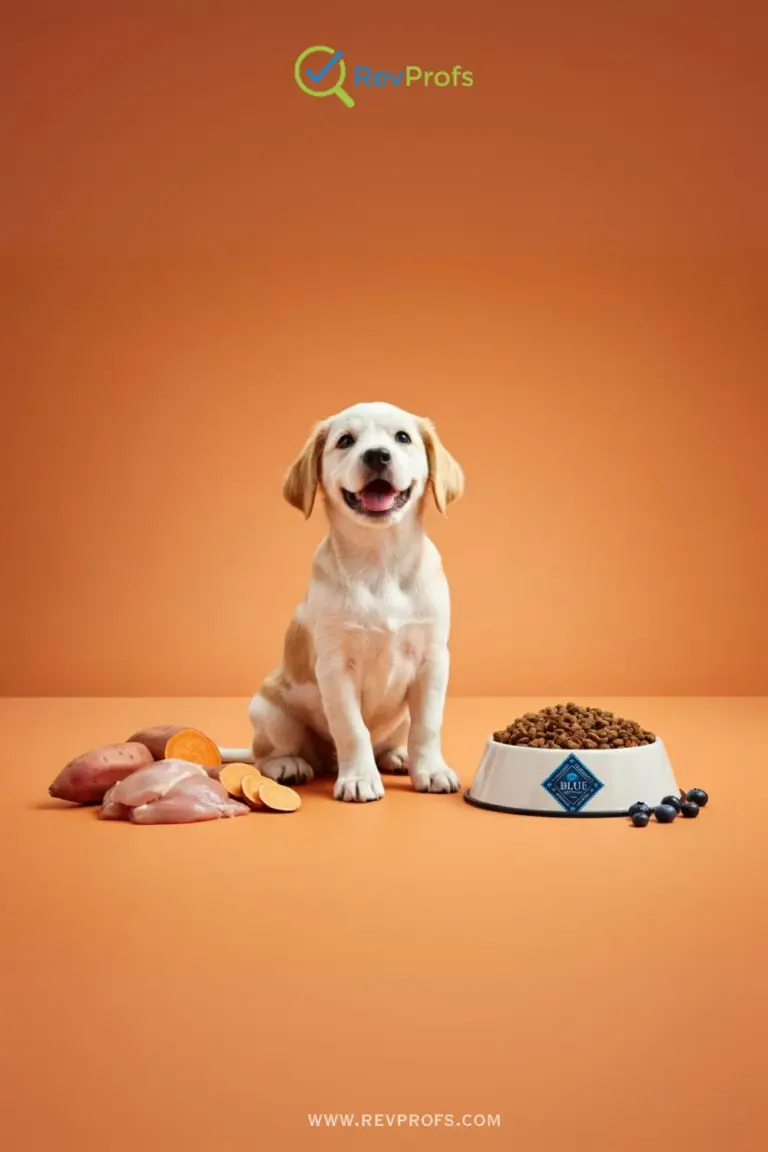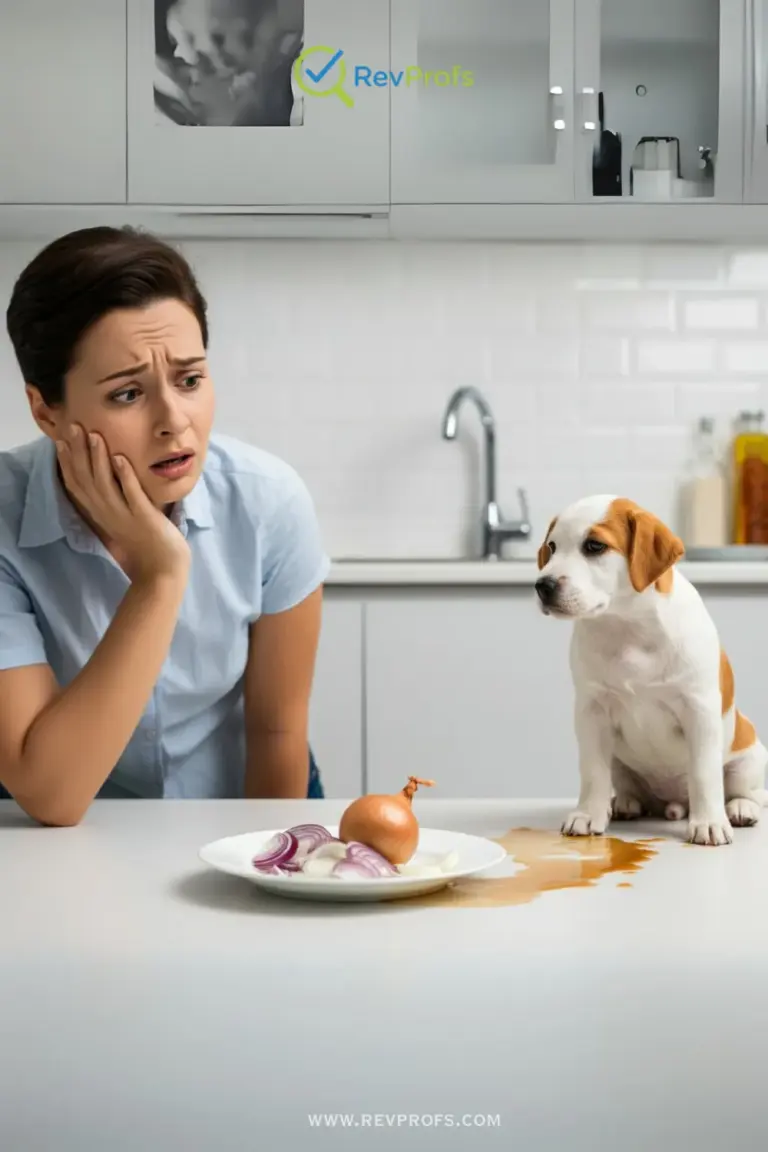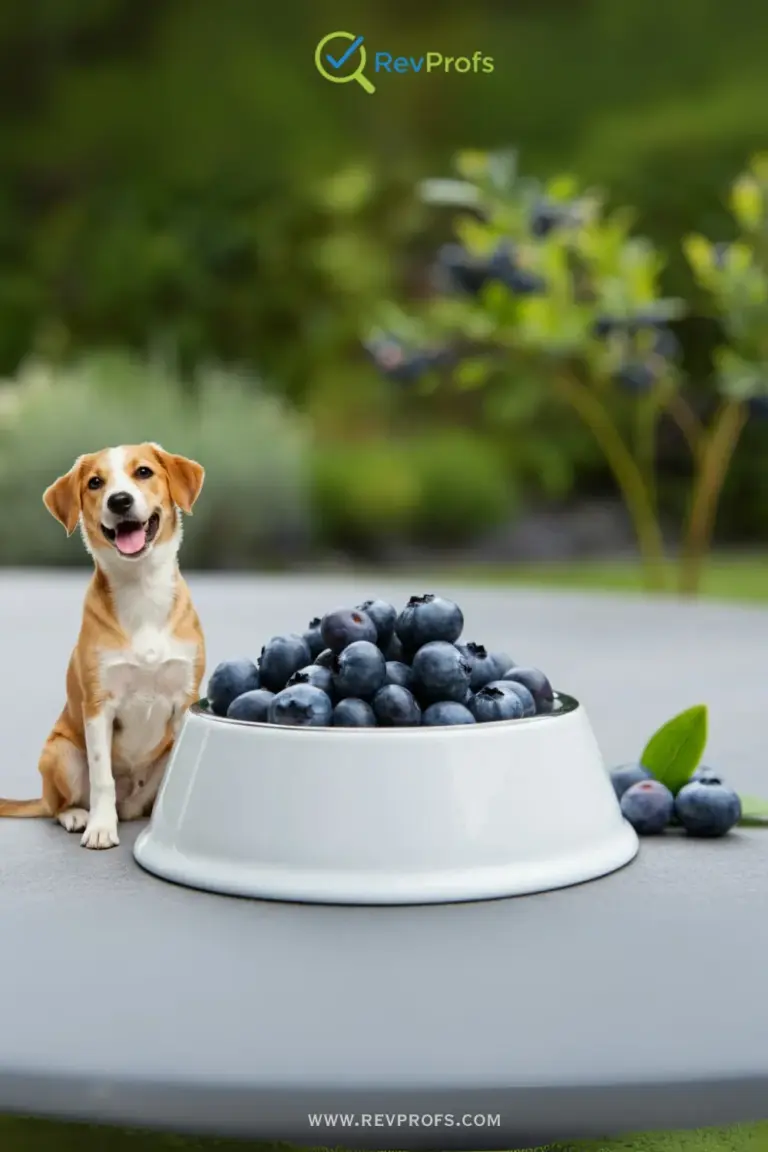Can I Feed Cat Food to a Dog? 5 Critical Reasons Why Not
If you live in a multi-pet household, you’ve probably seen it happen. You put down food for your cat, and your dog eagerly muscles in for a taste. This common scenario leaves many loving pet owners asking, can I feed cat food to a dog? It’s a fair question, especially when your dog seems to love the feline’s fare. The short answer is no, you shouldn’t feed cat food to your dog as a regular meal. While a small, accidental nibble is unlikely to cause harm, a consistent diet of cat food can lead to significant health problems for your dog.
It can be confusing, especially when your dog gives you those pleading eyes. You want what’s best for them, and navigating pet nutrition can feel like a challenge. In this guide, we’ll break down exactly why these two foods are so different, what happens if your dog eats cat food, and how to manage the situation to keep your canine companion healthy and happy for years to come.
Can I Feed Cat Food to a Dog?
Let’s dive right into the heart of the matter. The reason you can’t simply swap your dog’s dinner for the cat’s is that dogs and cats have fundamentally different nutritional requirements. Dogs are omnivores, meaning they thrive on a diet containing both animal and plant matter. Cats, on the other hand, are obligate carnivores. This means they must have meat to survive, and their diet requires much higher levels of protein and fat than a dog’s.
Pet food manufacturers spend countless hours on research to formulate diets that are “complete and balanced” for a specific species. Feeding your dog a diet formulated for a cat means you’ll be providing the wrong balance of nutrients, which can have serious consequences over time.
The Key Nutritional Differences Between Dog and Cat Food
Understanding the nutritional differences between dog and cat food is key to appreciating why they aren’t interchangeable. Cat food is designed to meet the unique needs of an obligate carnivore.
- Protein Levels: This is the biggest difference. Cat food contains significantly higher levels of protein. While dogs need protein, the excessively high amount in cat food can strain their kidneys and liver over time.
- Fat Content: Cat food is much richer in fat to provide the energy a cat needs. For a dog, this high-fat diet can easily lead to obesity and a dangerous inflammatory condition called pancreatitis.
- Taurine: Cats cannot produce their own taurine, an essential amino acid, so it must be supplemented in their food. Dogs can synthesize their own taurine, so their food contains much less. While the extra taurine isn’t harmful to dogs, it highlights a fundamental metabolic difference.
- Arachidonic Acid: This is another fatty acid that cats must get from their diet, while dogs can produce it themselves.
- Vitamin A: Cats also need a direct source of Vitamin A in their food, whereas dogs can convert beta-carotene into Vitamin A.
Essentially, cat food is a calorie-dense, high-protein, high-fat meal that is simply too rich for a dog’s digestive system and metabolic needs.
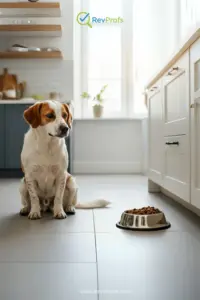
Practical Advice for Concerned Dog Owners
So, you’ve established that cat food is off the menu. But what happens if your dog has already helped themselves? And what if your dog seems to actively prefer the cat’s food?
What Happens if a Dog Eats Cat Food?
If your dog sneaks a few bites from the cat’s bowl, there’s usually no need to panic. For a healthy adult dog, a small amount of cat food is unlikely to cause any lasting harm. However, you might see some immediate digestive upset.
This is because the richness of the food can be a shock to your dog’s system. You might notice your dog ate cat food now has diarrhea, vomiting, or gas. These symptoms are usually temporary and resolve on their own as the rich food passes through their system.
The real concern is not the occasional transgression but the long-term consumption. The long term effects of dog eating cat food are much more serious and can include:
- Obesity: The high calorie and fat content will likely lead to unhealthy weight gain.
- Pancreatitis: This painful and potentially fatal inflammation of the pancreas can be triggered by high-fat meals.
- Kidney or Liver Issues: Processing excessive protein can put a long-term strain on these vital organs.
- Nutritional Deficiencies: While rich in some areas, cat food lacks the specific balance of vitamins and minerals formulated for canines.
So, is cat food bad for dogs? Yes, when fed as a staple diet, it is very bad for their health. Read our Guide to Canine Obesity to learn more about maintaining a healthy weight.
What About Puppies? Can Puppies Eat Cat Food?
The answer is an even more definitive no. Can puppies eat cat food is a question that requires special attention. A puppy’s developing body is incredibly sensitive to nutritional imbalances. While puppy food is high in calories to support growth, it is carefully balanced with the correct ratios of calcium, phosphorus, and other nutrients for healthy bone and joint development.
Feeding a puppy cat food can disrupt this delicate balance, potentially leading to orthopedic problems later in life. Furthermore, the extreme richness of cat food is very likely to cause severe gastrointestinal upset in a young puppy’s sensitive stomach.
Help! My Dog Prefers Cat Food
It’s a surprisingly common problem: my dog prefers cat food. The reason is simple—the high protein and fat content make cat food smell more pungent and taste richer to a dog. It’s the canine equivalent of choosing a greasy burger over a balanced salad.
If you’re dealing with this, here are a few tips:
- Separate Feeding Areas: Feed your dog and cat in different rooms, or use a baby gate to keep your dog away from the cat’s food. You can also feed your cat on an elevated surface like a counter or cat tree that your dog can’t reach.
- Stick to a Schedule: Don’t leave food out all day. Offer meals at specific times and pick up any uneaten food after about 15-20 minutes.
- Make Their Food More Appealing: Try adding a splash of warm water or a small amount of a dog-safe food topper to your dog’s kibble to make it more enticing. Read our Tips for Picky Eaters for more ideas.
For more helpful video tips on pet care, check out our YouTube channel at https://www.youtube.com/@Revprofs.
Your Partner in Pet Nutrition
Ultimately, the answer to “can I feed cat food to a dog?” is clear. It’s not a safe or healthy practice. Dogs have their own unique dietary needs that are best met by a high-quality food formulated specifically for them. For authoritative information on this topic, the American Kennel Club (AKC) provides excellent resources on canine nutrition.
Choosing the right food is one of the most important decisions you’ll make for your pet’s long-term health. By understanding the science behind their diet, you’re empowered to provide them with the foundation for a long, happy, and vibrant life. If you’re looking for more great content, explore the articles on our blog at https://www.revprofs.com/blog/.
If you have any concerns about your dog’s diet or health, your veterinarian is always your best resource. They can help you find the perfect food to keep your best friend thriving. Read our How to Choose the Best Dog Food for more guidance.
Ready for the Next Step?
Your pet's journey doesn't end here. Explore our expert guides to ensure they get the best care at every stage.
Puppy & Dog Care
From choosing the right food to understanding their behavior, our dog care guides cover everything you need to know.
Explore Dog GuidesGear & Product Reviews
Find honest, in-depth reviews on the latest pet gear, from smart collars to durable toys, and make informed decisions.
See All Reviews
